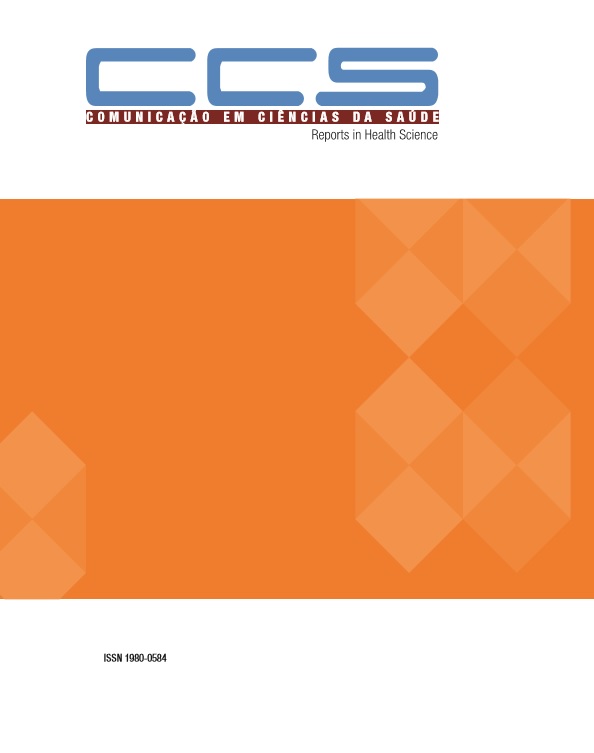Profile of hospital care provided by Obstetrics resident nurses in Brasilia, Federal District
DOI:
https://doi.org/10.51723/ccs.v27i04.35Keywords:
Obstetric Nursing;, Natural Childbirth;, Nursing CareAbstract
Objective: Describe the parameter results of the assistance during parturition labor, provided by obstetrics resident nurses at a school hospital in the Federal District.
Method: This is a descriptive study with a quantitative approach realized through the document analysis method. The document used for analysis in this study was normal births registration book assisted by nurses in obstetrics residents and research in the electronic medical record. They observed 142 handbooks. The births were analyzed for the period between February 2011 to May 2015. In the analysis, were used frequency distribution and percentage through Microsoft Office Excel (2010).
Results: They analyzed 142 births. The prevalent age group among pregnant women was 20-30 years (48.6%), they were mostly single mothers (28.2%), first pregnancy (35.2%) and term pregnancy (38%). Facilitators exercises most used were the vertical positions (15.3%) and walking (11.4%). Most births was conducted without the use of oxytocin (62.7%). Maternal lithotomy position has been the predominant (73.9%), in most pregnant women has not been performed the episiotomy (85.2%) and there was first grade laceration (70.9%). Most new‑ borns got an Apgar score above 7 in the first and fifth minute of life (88.7% and 95.1%).
Conclusion: The findings of this study reveal that the obstetrics resident nurses predominantly establish humanized care practices based on scientific evidence. The only conduct that was widely used, which goes against what is recommended in the literature is the predominance of lithotomy position, probably because of cultural concerns that envolve the professionals and the pregnant women. Therefore, the results of this analysis contribute for the improvement of obstetric assistance.
Downloads
Downloads
Published
Issue
Section
License
Declaro para os devidos fins que o artigo que estou submetendo representa um trabalho original e nunca foi publicado total ou parcialmente, e que se alguma de suas partes foi publicada possuímos autorização expressa para a publicação no periódico Comunicação em Ciências da Saúde (CCS). Esse artigo não foi enviado a outro periódico e não o será enquanto estiver sendo considerada sua publicação; caso venha a ser aceito não será publicado em outro periódico; e não contém material difamatório ou ilegal sob nenhuma forma, não viola a intimidade de terceiros, nem infringe direitos protegidos.
Eu e demais autores desse trabalho certificamos por meio desta declaração que:
- Concordamos com as normas editoriais e com o processo de revisão da CCS;
- Aceitamos a responsabilidade pela conduta desse estudo e pela análise e interpretação dos dados;
- Cooperaremos, sempre que solicitado, na obtenção e fornecimento de dados sobre os quais o manuscrito está baseado, para exame dos avaliadores;
- Não estão sendo omitidos quaisquer ligações ou acordos de financiamento entre os autores e companhias ou pessoas que possam ter interesse no material abordado no artigo;
- Não estão sendo excluídos ou omitidos deste artigo autores ou instituições participantes;
- Possuímos permissão para uso de figuras e tabelas publicadas em outras fontes;
- Possuímos permissão das pessoas e instituições citadas nos agradecimentos;
- O autor correspondente autoriza a publicação do endereço informado e e-mail do(s) autor(es) junto com o artigo;
- Assumimos a responsabilidade pela entrega de documentos verídicos;
- Autorizamos a publicação do referido artigo no periódico Comunicação em Ciências da Saúde, segundo critérios próprios e em número e volume a serem definidos pelo editor do periódico;
- Nos comprometemos a atender os prazos estipulados pelos editores do periódico Comunicação em Ciências da saúde;
- Estamos cientes de que a não manifestação no prazo de dois dias da revisão da diagramação, recebida por e-mail, será considerado aprovado para publicação.








